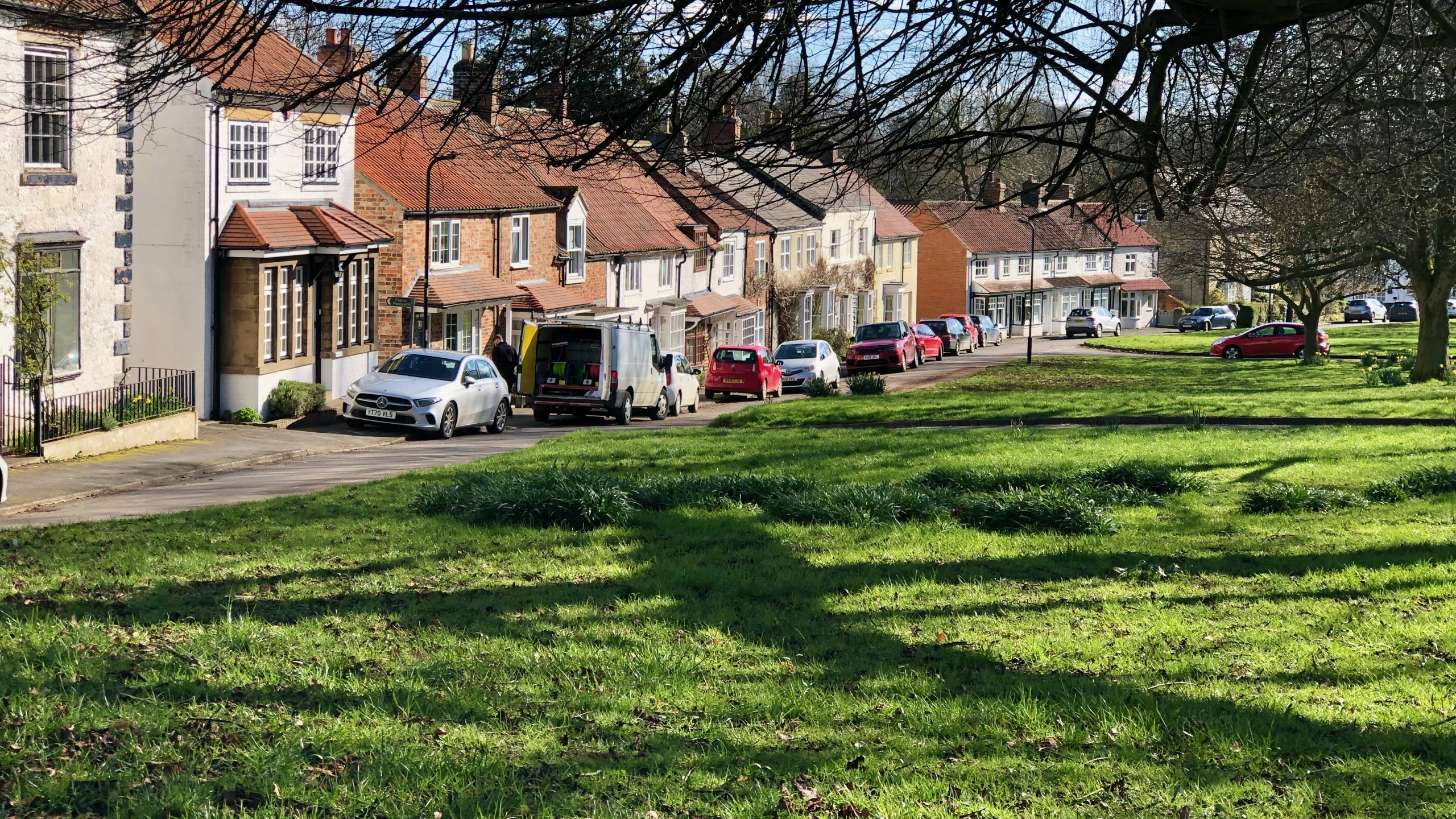If you look at old black and white pictures of Cleveland villages and compare them to what they look like today, you can see that there’s a big difference in the amount of trees. It seems like people didn’t really like having trees around until later in the 18th century. Hutton was no exception. In fact, the trees you see today on The Green weren’t planted until 1878. People held a concert to raise money for the trees, and asked for donations from others.
The Green is was included in the 1853 6″ survey O.S. map, but it was probably a planned addition. The original green is now called North End and goes north from the highest point in the village. Hutton actually means the ‘high settlement’ — the ‘ton’ element indicates this is an Anglo-Saxon name. By contrast, Rudby, originally the Viking settlement on the north side of the River Leven, means ‘Rudi’s farmstead’. Over time, the two settlements became one and were known in the 19th century as Hutton-juxta-Rudby.
The Green used to be called High Street, the names North and South Side were not used until the end of the 19th century.
Left of centre, just behind the first parked car, is a public footpath fingerpost. It points down Crow Well Lane. This path joins one that comes from Honeymans Field and continues down Crow Bank to the old mill site. Near the junction was the old Crow Well, as well as one of the village’s rubbish dumps. Nearby, there was also a pit where George Stringer’s shire horse once fell in and had to be winched out.
If your eyes wander downhill from the fingerpost, along the frontages, you’ll first find Crowell House. Previously known as Crowell Cottage, this building was a one-story structure until 1956 and was used by Mr. Grierson as his butcher shop while his brother worked as a cobbler. During World War II, the Home Guard used a portion of the house and kept their ammunition in a shed located at the bottom of Springwell House’s garden.
Further down the road, there was a group of shops and businesses. There was MacCutcheons, which was a watchmaker and cycle repair shop that was in business for over 30 years. Children would buy elastic there for their catapults. There were also Jacksons, the butchers, and Barthrams.
Next there was a coal merchant named George Stringer who collected coal from Potto Station and delivered it to his customers using a horse and cart. Presumably his horse recovered from its ordeal. Stringer even had a seating framework that he could place on top of the cart to run a bus service. In 1924, He began the Sunbeam Motor Service between Hutton Rudby and Stockton, using a Fiat saloon bus.
Closer to the Bay Horse, there was Greaves’ Garage. Its founder, Horace Greaves, initially began his business with a cycle shop after returning from the First World War. However, he soon identified new prospects and secured one of the earliest Morris dealerships in the country. The business was subsequently relocated to Garbutts Lane, occupying the premises used by the Blue Riband bus company.
Sources:
- Barrigan, Alice. 2023. ‘A History Walk Round Hutton Rudby’, <http://northyorkshirehistory.blogspot.com/2012/10/a-history-walk-round-hutton-rudby.html> [accessed 3 April 2023]
- Morris, R.W. “Yorkshire through Place Names”. Page 132. David & Charles. 1982. ISBN 0-7153-8230-6.

Leave a Reply